Best Hiking Shoes Revealed: Your Ultimate Guide to Trail Mastery
1. Introduction to Hiking and Hiking Shoes
As a passionate hiker, I’ve come to understand the crucial role that the right pair of hiking shoes plays in enjoying and thriving on the trails. Through my own experiences and extensive hikes, I’ve gathered valuable insights into what makes a hiking shoe great. In this guide, I’ll share my knowledge to help you make informed choices, whether you’re a beginner or a seasoned hiker.
2. Understanding Different Types of Hiking Shoes
When embarking on your hiking journey, the significance of selecting the right type of hiking shoes can’t be overstated. With a variety of options available, each catering to different terrains and hiking styles, understanding the distinctions is crucial for both comfort and safety. Here’s an expanded overview of the types of hiking shoes you might encounter:
Trail Runners: Light and Agile
- Ideal Use: Perfect for fast-paced hiking on well-maintained, less rugged trails.
- Key Features:
- Lightweight Design: Minimizes fatigue during long hikes.
- Flexible Soles: Enhance comfort and foot mobility.
- Breathability: Keeps feet cool in warm conditions.
- Pros: Excellent for long-distance, lightweight hiking where speed and agility are priorities.
- Cons: Less protection and support compared to sturdier hiking boots.
Hiking Boots: Robust and Supportive
- Ideal Use: Suited for diverse terrains, from mountainous trails to muddy paths.
- Key Features:
- Ankle Support: Provides stability on uneven terrains.
- Durable Materials: Resist wear and tear from harsh conditions.
- Enhanced Traction: Offers a firm grip on slippery or steep surfaces.
- Pros: Great for carrying heavier loads and providing foot and ankle protection.
- Cons: Generally heavier and less breathable than lighter footwear options.
Hiking Shoes: The Versatile Middle Ground
- Ideal Use: A versatile option for various types of hikes, from short day trips to moderate backpacking.
- Key Features:
- Balance of Flexibility and Support: Offers comfort without sacrificing too much protection.
- Diverse Styles: Ranging from low-cut designs to ones offering more ankle support.
- Moderate Weight: Strikes a balance between light trail runners and heavy boots.
- Pros: A great all-rounder suitable for many hikers and various terrains.
- Cons: May not offer as much durability as hiking boots in extreme conditions.
Mountaineering Boots: For the Toughest Trails
- Ideal Use: Designed for challenging mountainous terrains and harsh weather conditions.
- Key Features:
- Stiff Construction: Provides support for climbing and traversing rocky areas.
- Compatible with Crampons: For ice and snow-covered terrains.
- Insulation: Keeps feet warm in cold environments.
- Pros: Ideal for high-altitude hikes, winter trekking, and technical climbs.
- Cons: Often too rigid and heavy for casual hiking.
Making the Right Choice
The choice of hiking footwear largely depends on the nature of your hikes:
- Trail Type: Consider the terrain. Smooth trails are great for trail runners, while rugged, uneven paths may require the sturdiness of hiking boots.
- Hike Duration: Longer hikes, especially with heavy backpacks, call for shoes with better support and cushioning.
- Weather Conditions: Waterproof boots are essential for wet conditions, while breathable shoes are better for dry climates.
- Personal Preference: Comfort is key. Always try on different styles to see what suits your foot shape and hiking style best.
3. Key Features to Look for in Hiking Shoes
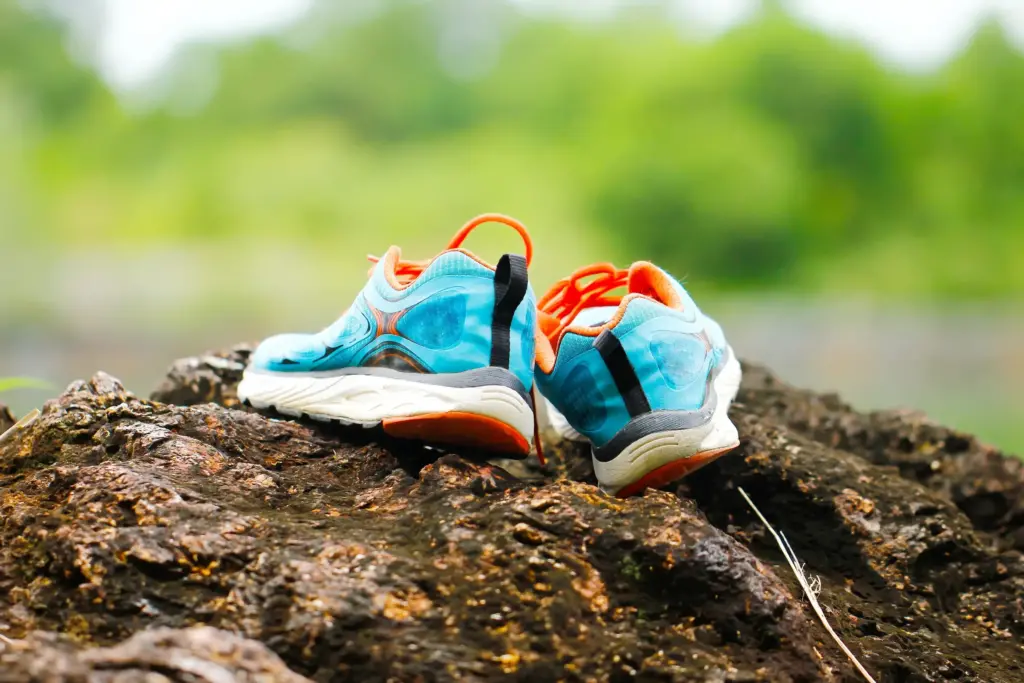
Selecting the right hiking shoes is a decision that can significantly impact your hiking experience. To ensure you’re well-equipped for the trails, it’s crucial to understand and consider several key features. These features not only enhance the performance but also ensure comfort and safety during your hikes. Let’s delve into each of these features in detail:
Fit and Comfort: The Foundation of a Good Hike
- Why It Matters: A good fit is essential to prevent blisters, discomfort, and injuries. Properly fitting shoes will enhance your overall hiking experience.
- What to Look For:
- Snug Heel: Your heel should fit snugly in the shoe without slipping.
- Wiggle Room: Enough space in the toe box to wiggle your toes without cramping.
- Arch Support: Adequate support for your arch type to avoid foot fatigue.
- Try Before You Buy: Always try on hiking shoes with the socks you plan to hike in.
Material and Durability: Built to Last
- Why It Matters: The materials determine the shoe’s durability, breathability, and water resistance.
- What to Look For:
- Quality Fabrics: Materials like leather or advanced synthetics offer durability.
- Reinforced Areas: Look for additional protection on high-wear areas like the toes and heels.
- Stitching vs. Gluing: Stitched soles tend to be more durable than glued ones.
Traction and Grip: Stay Steady on Any Surface
- Why It Matters: Good traction is crucial for safety, especially on uneven, slippery, or steep terrains.
- What to Look For:
- Lug Pattern: Deep and multi-directional lugs offer better grip.
- Rubber Compound: Softer rubber provides better grip on wet surfaces; harder rubber is more durable.
Weight Considerations: Balancing Lightness and Durability
- Why It Matters: The weight of your shoes can impact your hiking endurance and comfort.
- What to Look For:
- Lightweight Materials: Modern materials can offer durability without adding extra weight.
- Balance: Consider the type of hiking you’ll do; longer, more challenging hikes may warrant slightly heavier, more supportive shoes.
Waterproofing: Keeping Your Feet Dry
- Why It Matters: Wet conditions not only cause discomfort but also increase the risk of blisters and foot problems.
- What to Look For:
- Waterproof Membranes: Materials like Gore-Tex provide water resistance while allowing breathability.
- Gusseted Tongues: Prevent water from entering through the laces area.
- Consider Climate: In very hot and dry conditions, non-waterproof, more breathable shoes might be a better choice.
4. How to Fit Hiking Shoes Correctly
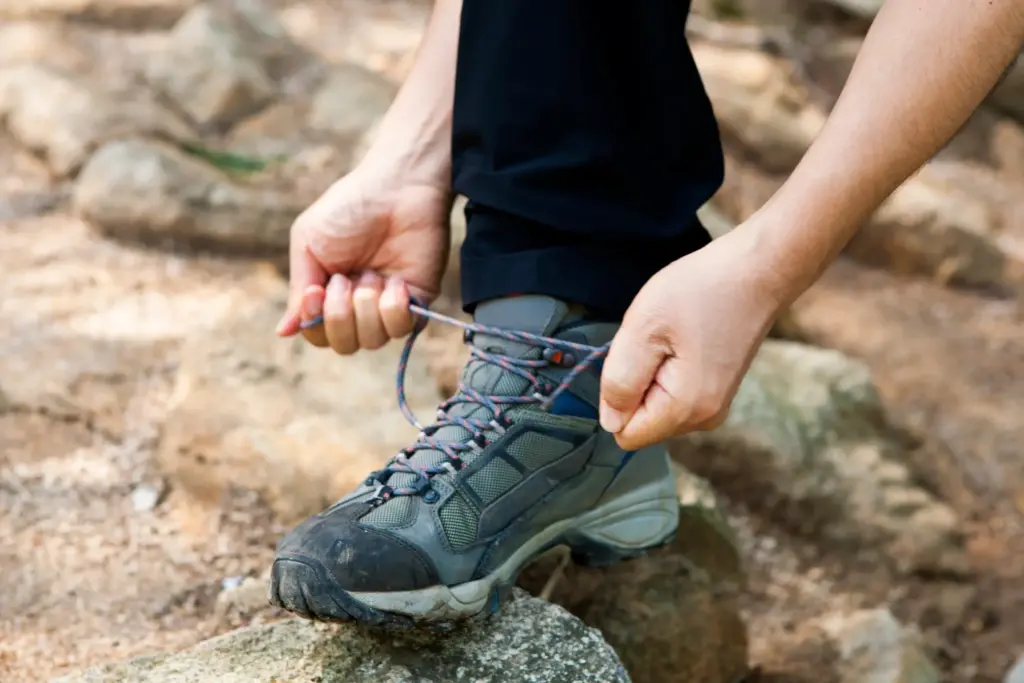
Ensuring your hiking shoes fit correctly is not just a matter of comfort; it’s a vital step in injury prevention and enhancing your overall hiking experience. A well-fitting pair of hiking shoes can be the difference between an enjoyable hike and a painful ordeal. Let’s break down the process of achieving the perfect fit:
Measuring Your Foot Size: The Starting Point
- Importance: Precise foot measurements are crucial for a good fit. Even a small discrepancy can cause discomfort.
- How to Measure:
- Length: Measure your foot from the heel to the longest toe. It’s best to measure your feet at the end of the day when they are largest.
- Width: Don’t neglect the width of your foot. Hiking shoes come in various widths to accommodate different foot shapes.
- Professional Fitting: Consider getting your feet measured professionally at a shoe store.
Checking for Proper Toe Space: Room to Move
- Why It’s Important: Adequate toe space prevents cramping and blisters, especially on downhill treks.
- What to Look For:
- Thumb’s Width: Ensure about a thumb’s width of space between your longest toe and the front of the shoe.
- Wiggle Room: You should be able to wiggle your toes without them hitting the front of the shoe.
The Heel Lift Test: Ensuring Stability
- Purpose: Preventing heel lift is key to avoiding blisters and ensuring stability.
- How to Test:
- Walk Around: Walk in the shoes on a flat surface and a slope if possible.
- No Lift: Your heel should stay securely in place with each step.
- Snug Fit: The shoe should hold your heel firmly, without being uncomfortably tight.
Understanding Arch Support: A Pillar of Comfort
- Significance: Proper arch support is essential for distributing weight evenly and preventing foot fatigue.
- Identifying Your Needs:
- Know Your Arch Type: Flat, normal, or high arches each require different levels of support.
- Custom Insoles: Consider custom insoles or orthotics for tailored arch support.
Additional Fitting Tips:
- Wear Proper Socks: Always try on hiking shoes with the socks you intend to hike in.
- Try Different Brands: Different brands and models have unique fits – don’t hesitate to try several options.
- Consider Foot Changes: Feet can change over time; get measured regularly and consider changes like swelling during hikes.
5. Top Recommendations for Hiking Shoes
Based on various needs and experiences, here are my top picks:
- Best for Beginners: Look for shoes that offer comfort and durability without being overly technical.
- Best for Advanced Hikers: Choose shoes with robust support, superior grip, and adaptability to various terrains.
- Best Value for Money: There are great options that offer a balance between quality and affordability.
- Best for Specific Terrains: Tailor your choice to the kind of trails you’ll tackle most often.
Review of Men’s Hiking Shoes
Embarking on hiking adventures requires the right footwear. Here’s a review of seven popular hiking shoes, each offering unique features to cater to diverse hiking needs.
1. Columbia Men’s Crestwood Hiking Shoe
- Pros:
- Durable combination of leather, mesh, and webbing.
- TechLite midsole offers long-lasting comfort and high energy return.
- Omni-Grip non-marking outsole ensures excellent traction.
- Suede leather upper enhances durability.
- Attention to detail and quality craftsmanship.
- Cons:
- Limited color options.
- Might require breaking in for optimal comfort.
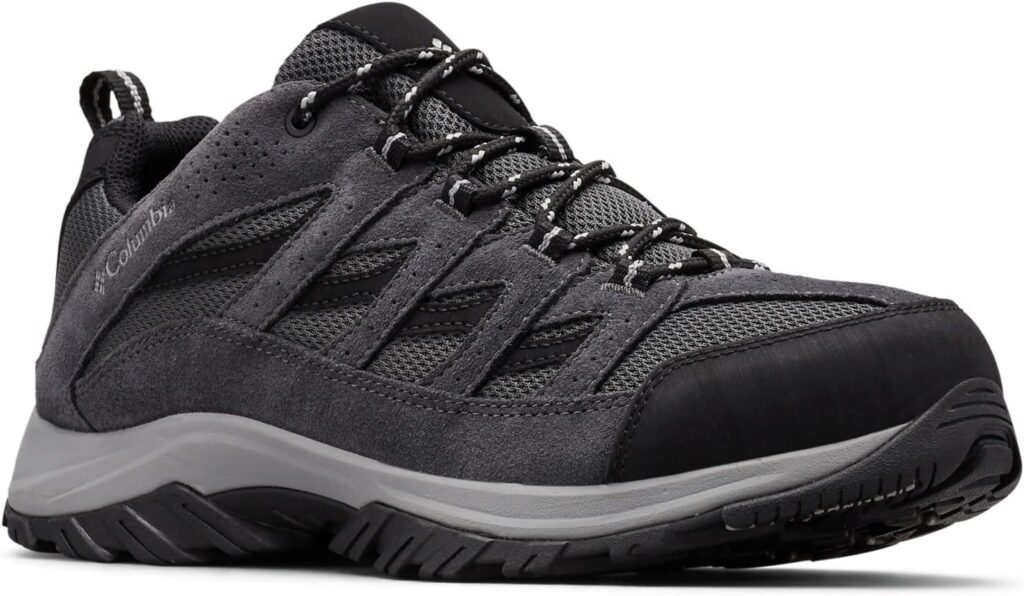
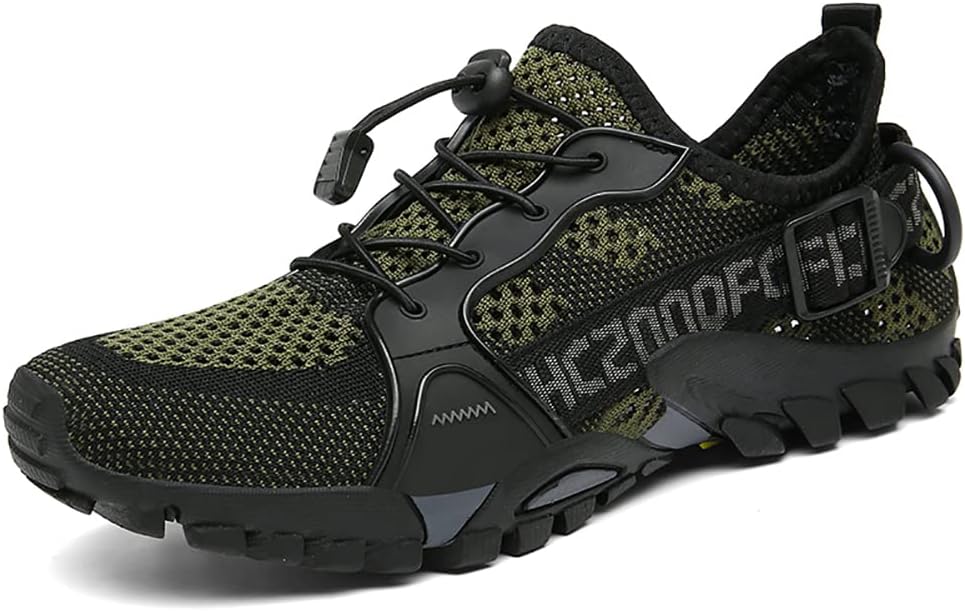
2. TANGYUGEN Water Shoes Men Women Outdoor Hiking Shoes
- Pros:
- Quick drying and breathable knit mesh upper.
- Lightweight and non-slip rubber sole for stability.
- Easy to put on and take off with adjustable shoelaces and heel pull tab.
- Suitable for a variety of activities, including water sports and hiking.
- Cons:
- May lack the support needed for very rugged terrains.
- Limited durability compared to traditional hiking shoes.
3. Merrell Men’s Moab 3 Hiking Shoe
- Pros:
- Pigskin leather and mesh upper for durability and breathability.
- Vibram TC5+ rubber sole for superior traction.
- Protective toe cap and recycled materials for eco-conscious hiking.
- Air cushion in the heel absorbs shock and adds stability.
- Cons:
- Higher price range.
- Some users might find the design bulky.
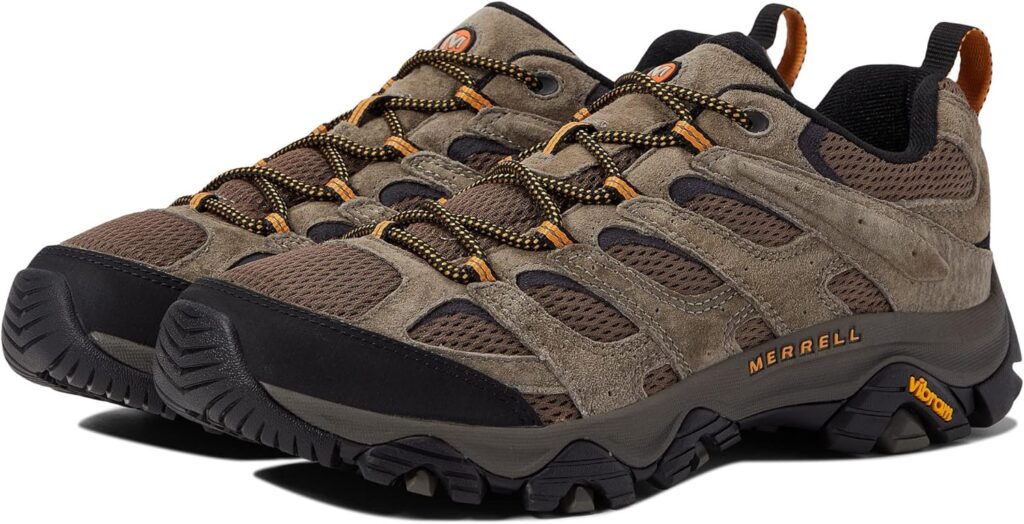
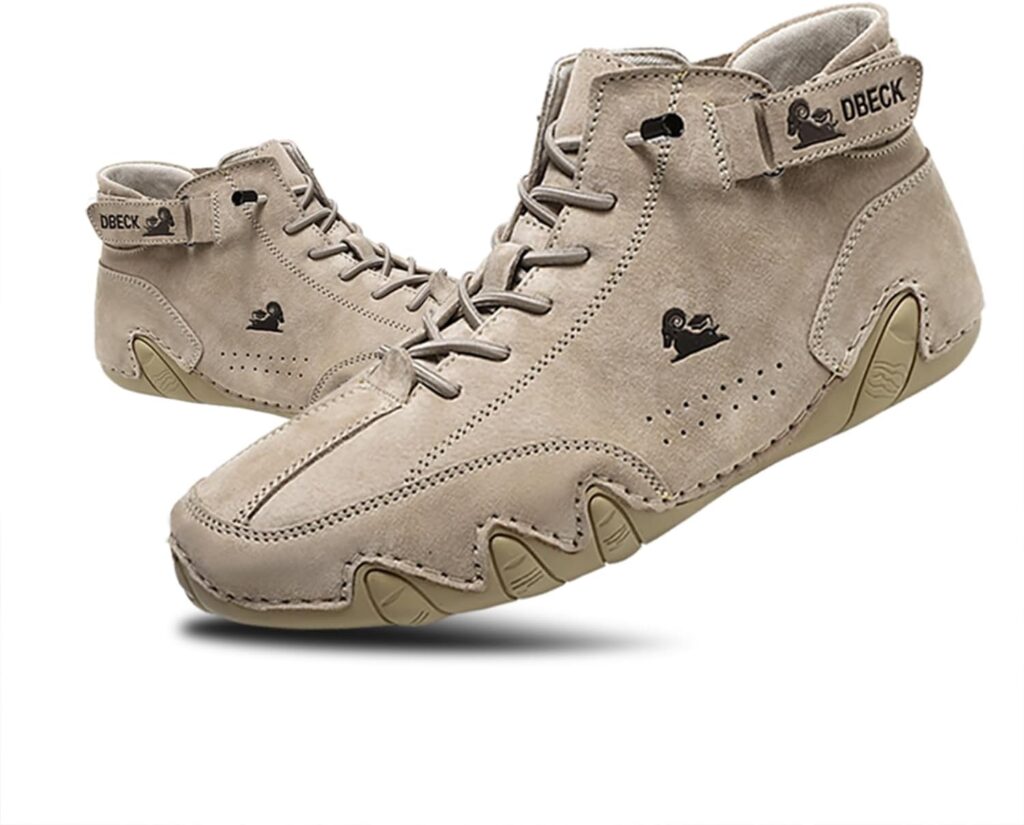
4. JishinGal Explorer Waterproof Lightweight Unisex Outdoor Shoes
- Pros:
- Handmade with high-quality leather and non-slip soles.
- High top boots with upgraded Velcro closure for easy wear.
- Fashionable design suitable for various occasions.
- Cons:
- Less breathable due to the high top design.
- May not be suitable for very technical hikes.
5. Salomon Men’s X Ultra Pioneer Aero Hiking Shoes
- Pros:
- Advanced Chassis between outsole and midsole for efficient, stable, and responsive ride.
- SensiFit system provides a secure and virtually customized fit.
- Regular laces for traditional and reliable fastening.
- Cons:
- Not water-resistant, limiting their use in wet conditions.
- May require a period of breaking in.
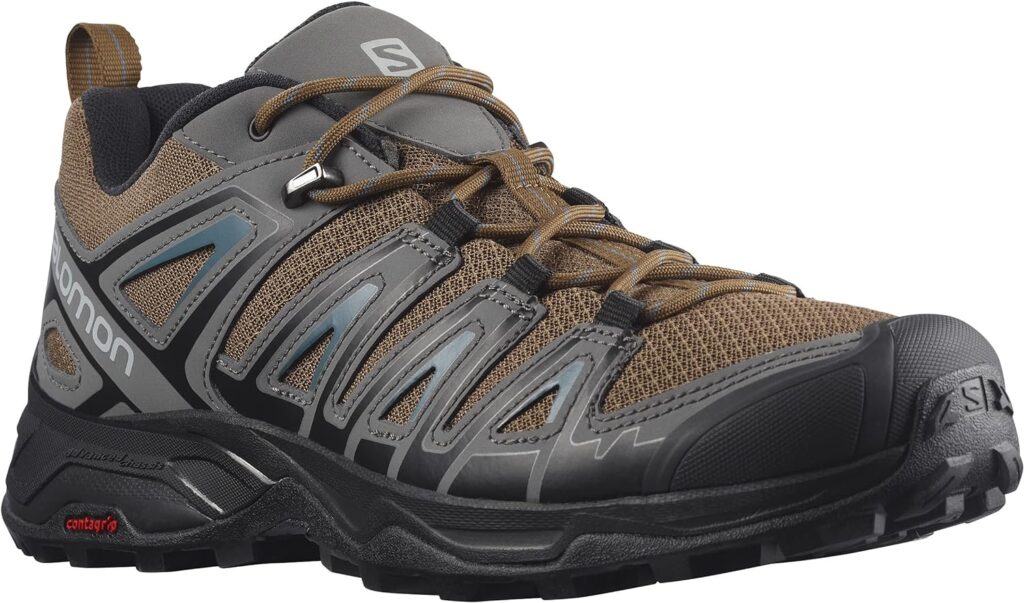
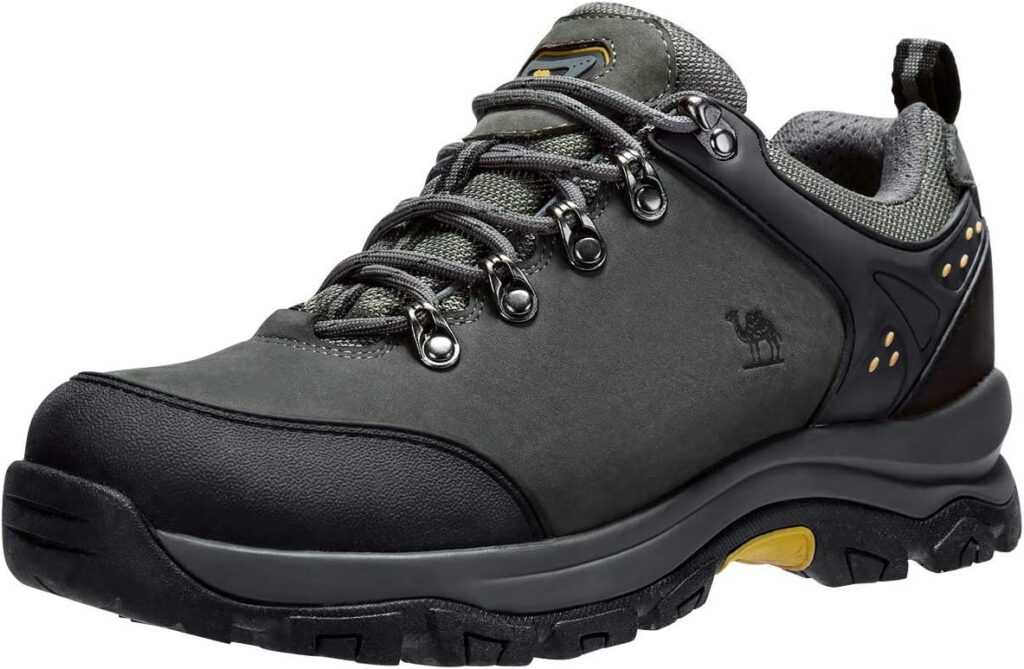
6. CAMEL CROWN Hiking Shoes Men Trekking Shoe
- Pros:
- Durable nubuck leather with water-resistant and tear-resistant qualities.
- Non-slip sole with deep lugs for excellent traction.
- Protective features like toe cap and padded collar for ankle safety.
- Comfortable and breathable, suitable for various outdoor activities.
- Cons:
- Limited style and color options.
- Some users may find them slightly heavier.
7. KEEN Men’s Voyageur Low Height Breathable Hiking Shoes
- Pros:
- Water-resistant leather and performance mesh for dry, airy feet.
- 4mm multi-directional lugs for increased traction.
- Excellent stability support and comfortable fit.
- Removable footbed for personalized arch support.
- Cons:
- Higher price point compared to other options.
- Design might not appeal to all users.
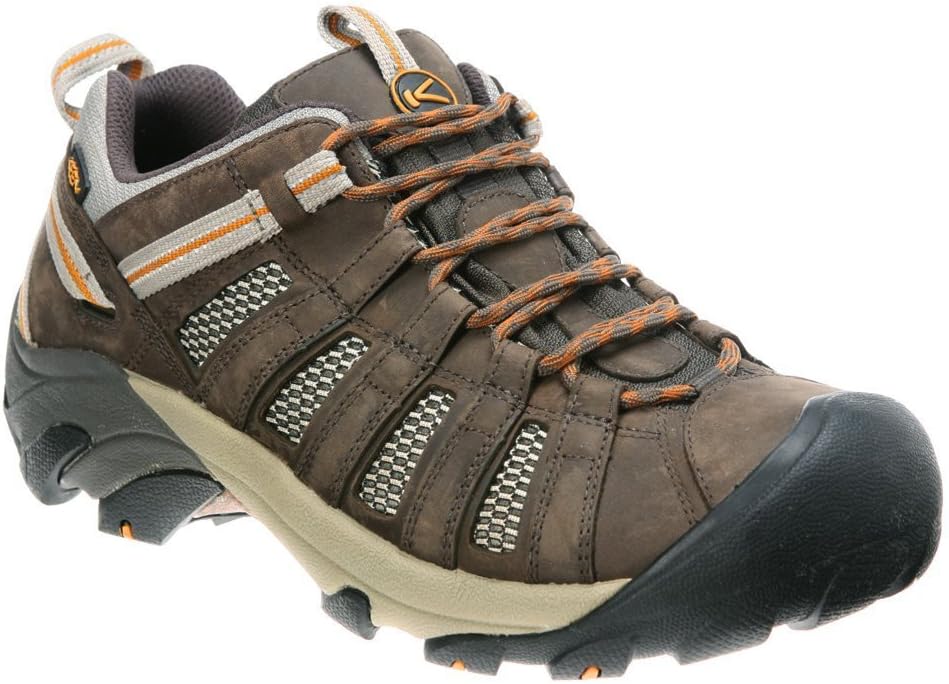
Men’s Hiking Shoes Summary
Each of these hiking shoes offers unique features catering to different hiking preferences and experiences. From the comfort and ease of use ideal for beginners to the robust support necessary for advanced hikers, and from excellent value options to shoes perfect for specific terrains, there’s a pair suitable for every hiker’s need.
Best for Beginners
- Columbia Men’s Crestwood Hiking Shoe: These shoes are ideal for beginners due to their combination of comfort and durability. The TechLite midsole provides long-lasting comfort without being overly technical, making them perfect for those just starting their hiking adventures.
- Salomon Men’s X Ultra Pioneer Aero Hiking Shoes: Also great for beginners, these shoes offer a secure fit with the SensiFit system and are easy to wear, which is essential for those new to hiking.
Best for Advanced Hikers
- Merrell Men’s Moab 3 Hiking Shoe: With their Vibram TC5+ rubber sole and pigskin leather and mesh upper, these shoes offer the robust support and superior grip needed for advanced hikers tackling challenging terrains.
- KEEN Men’s Voyageur Low Height Breathable Hiking Shoes: These shoes are also suitable for advanced hikers due to their water-resistant leather, multi-directional lugs for increased traction, and stability support.
Best Value for Money
- TANGYUGEN Water Shoes Men Women Outdoor Hiking Shoes: These shoes strike a great balance between quality and affordability. They are versatile, suitable for water sports and hiking, and offer quick drying and breathability.
- CAMEL CROWN Hiking Shoes Men Trekking Shoe: Offering durability with water-resistant nubuck leather and a non-slip sole, these shoes are also a great value for the quality they provide.
Best for Specific Terrains
- JishinGal Explorer Waterproof Lightweight Unisex Outdoor Shoes: These are ideal for fashion-forward hikers who also need a shoe for less technical terrains. The high-quality leather and non-slip soles make them suitable for casual trails and urban adventures.
- CAMEL CROWN Hiking Shoes Men Trekking Shoe: For those tackling mixed terrains, these shoes with their deep lug soles offer excellent traction and are well-suited for a variety of outdoor activities, from camping to trekking.
Review of Women’s Hiking Shoes
Exploring the great outdoors requires reliable footwear. Here’s a review of seven popular women’s hiking shoes, highlighting their pros and cons to help you find the perfect match for your adventures.
1. Columbia Women’s Facet 75 Mid Outdry Hiking Shoe
- Pros:
- Adapt Trax outsole offers excellent traction in both wet and dry conditions.
- OrthoLite Eco insole provides enhanced breathability and cushioning.
- Techlite PLUSH for maximum cushioning and smooth transition.
- Durable mesh with TPU midfoot support and Outdry waterproof construction.
- Cons:
- Price range varies significantly.
- Limited color options available.
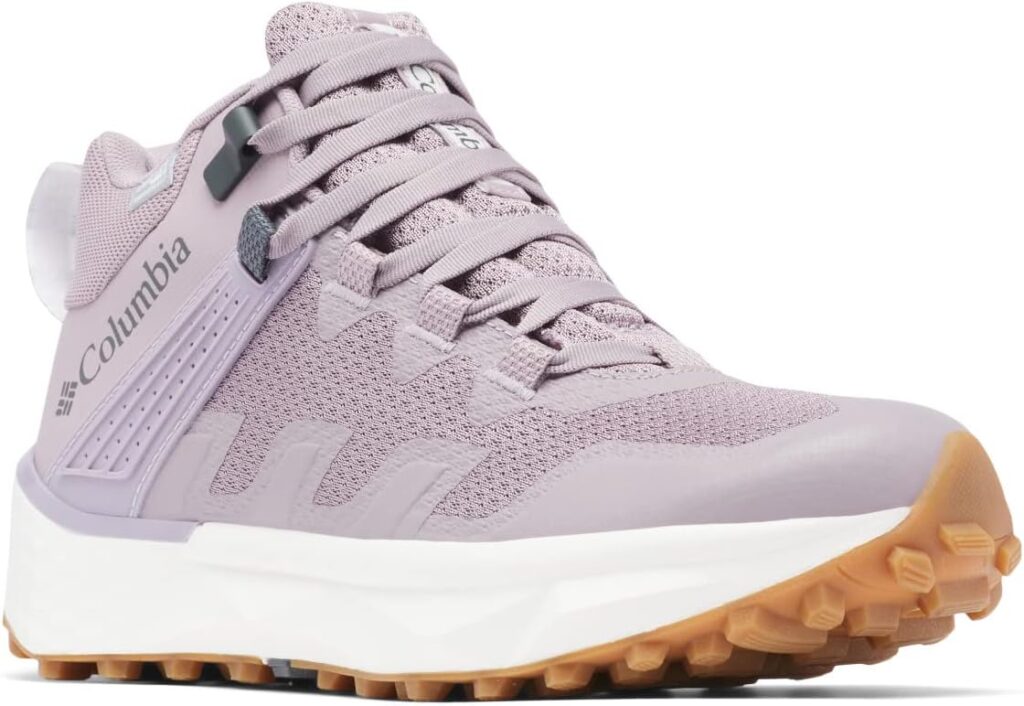
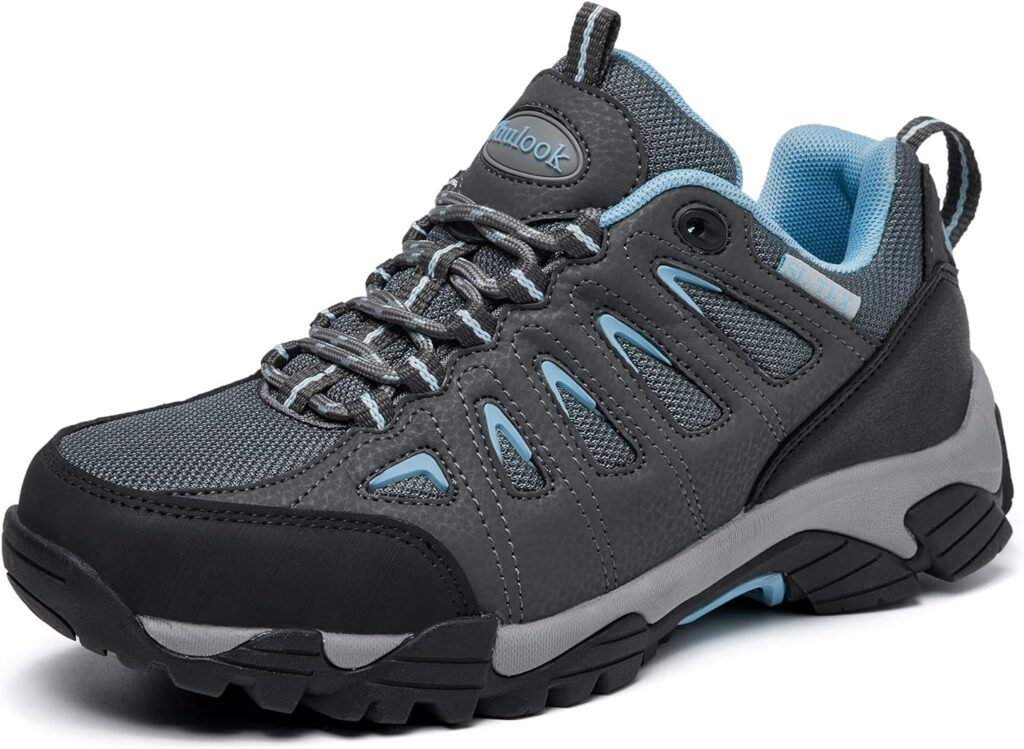
2. SHULOOK Hiking Shoes Women (Waterproof Shoes)
- Pros:
- Waterproof with SL-TEX membrane and lightweight design.
- Comfortable and dry with a waterproof sealing structure.
- Flexible, with removable memory foam insole for arch support.
- Durable EVA midsole and anti-slip rubber outsole.
- Cons:
- May lack the robustness for extremely rugged terrain.
- Some users might find the design less stylish.
3. SHULOOK Hiking Shoes Women (Non Slip Lightweight)
- Pros:
- High-performance suede leather for durability.
- Waterproof and breathable with SL-TEX membrane.
- Lightweight with breathable mesh lining.
- Non-slip, durable rubber outsole for excellent traction.
- Cons:
- Limited cushioning compared to other models.
- May require a break-in period for optimal comfort.
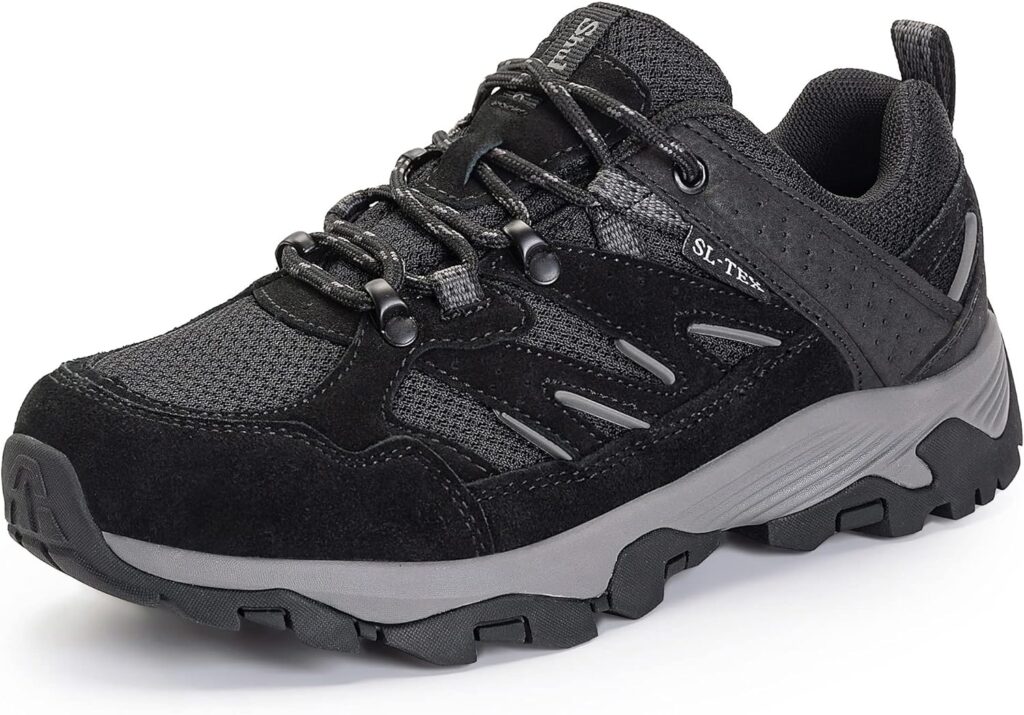
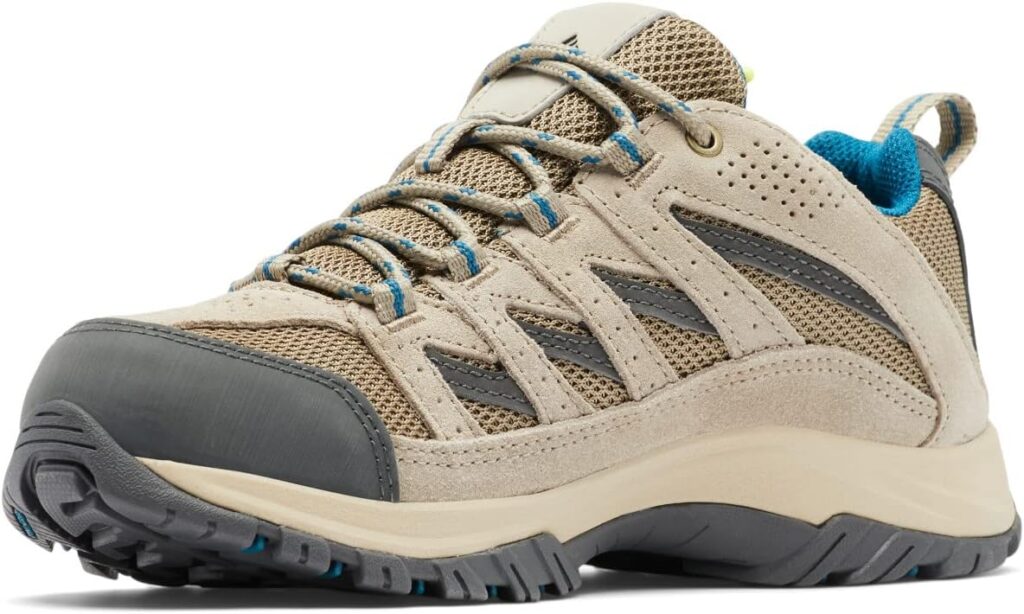
4. Columbia Women’s Crestwood
- Pros:
- Advanced technology with suede leather, webbing, and mesh construction.
- TechLite midsole for long-lasting comfort and high energy return.
- Omni-GRIP non-marking traction rubber outsole.
- Reinforced toe and heel construction for extended use.
- Cons:
- Design may not be suitable for highly technical hikes.
- Some users might prefer a more lightweight option.
5. Columbia Women’s Peakfreak Ii Outdry Hiking Shoe
- Pros:
- Superior waterproofing with Outdry technology.
- Multi-sport performance with seamless mesh and 3D printed upper.
- Navic Fit System for natural midfoot lockdown.
- TechLite+ midsole for underfoot cushioning and stability.
- Cons:
- Limited color choices.
- May feel stiffer than other models.
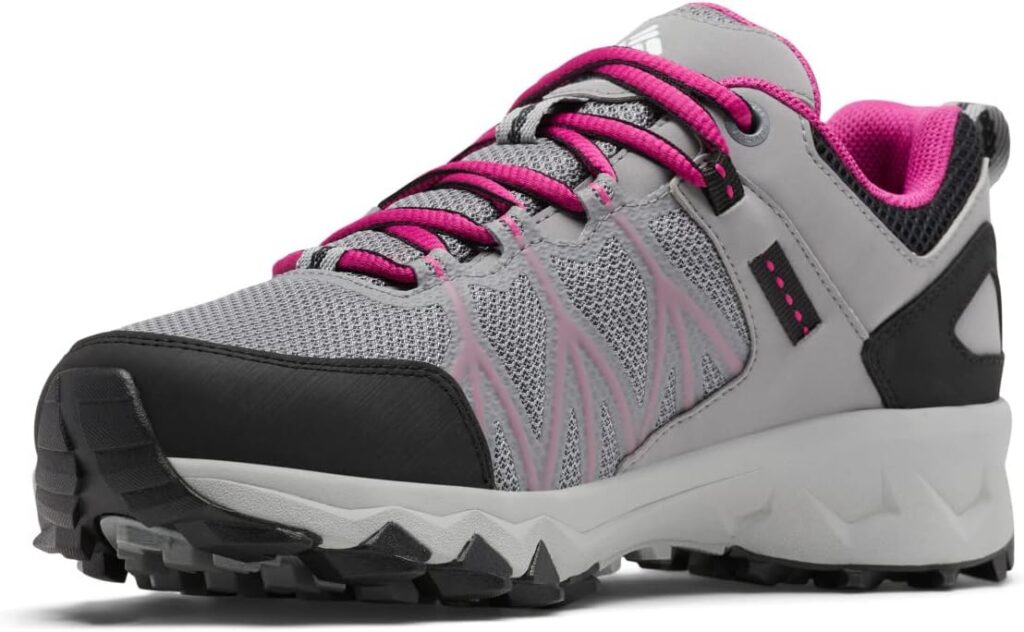
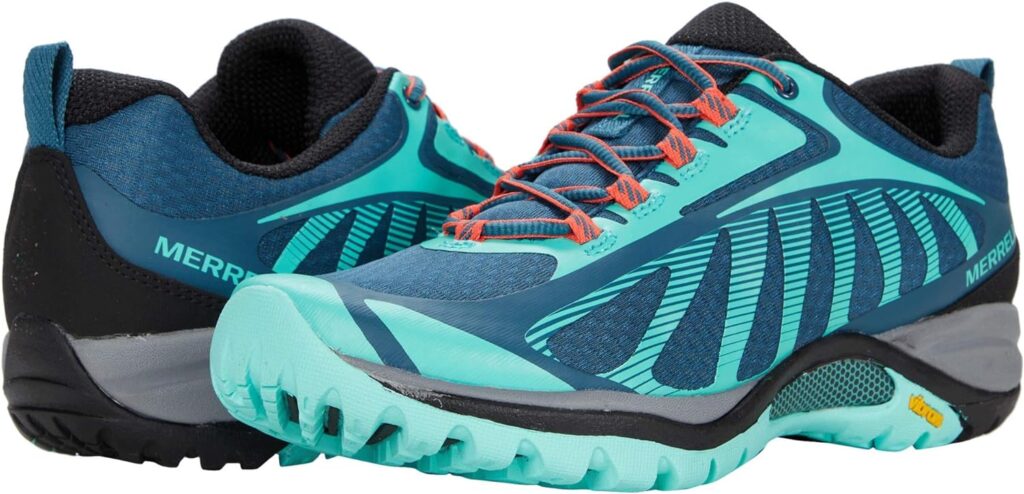
6. Merrell Women’s Siren Edge 3 Hiking Shoe
- Pros:
- Mesh and TPU upper for durability and breathability.
- Traditional lace closure for a secure fit.
- Bellows tongue keeps out debris.
- Kinetic Fit BASE removable insole for flexible support.
- Cons:
- May not provide enough ankle support for rugged terrains.
- Some users might find the sole less grippy on wet surfaces.
7. NORTIV 8 Women’s Lightweight Hiking Shoes
- Pros:
- Lightweight design for flexible movement.
- Wear-resistant upper with oxford cloth and TPU.
- Convenient cord lacing system for a secure fit.
- Enhanced traction with a textured rubber outsole.
- Cons:
- The lightweight build may not be suitable for very rough terrains.
- The style may not appeal to all hikers.
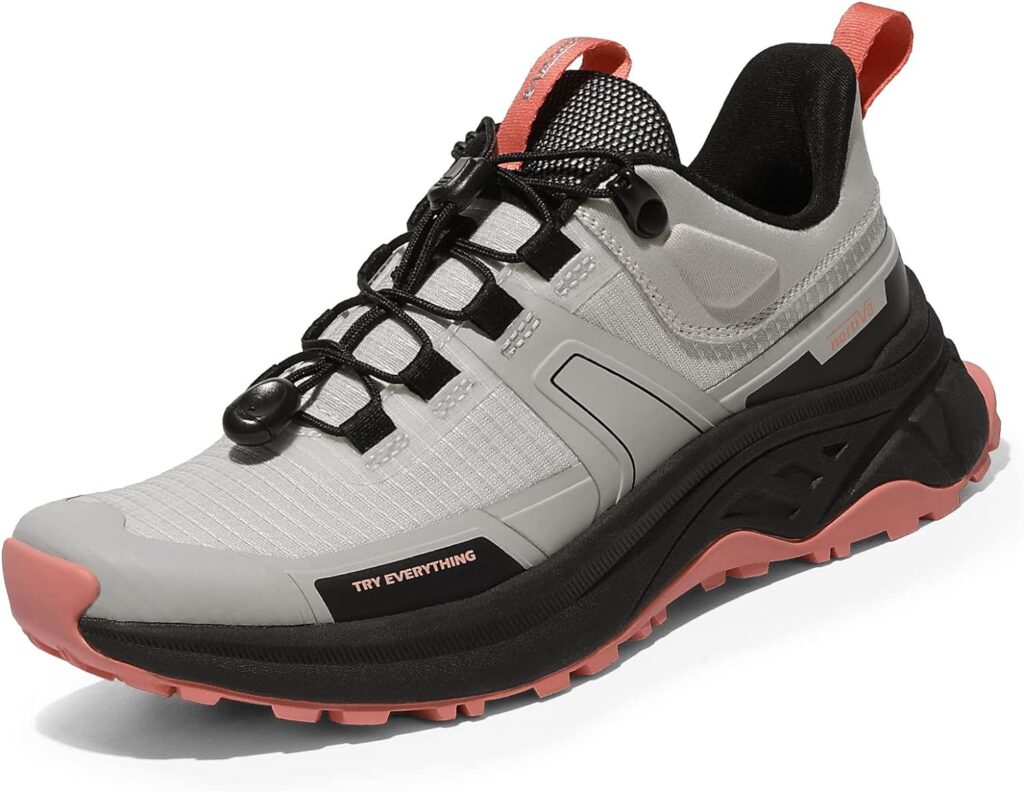
Women’s Hiking Shoes Summary
Each of these hiking shoes offers unique benefits catering to different hiking preferences and experiences. From the comfort and simplicity ideal for beginners to the robust support necessary for advanced hikers, and from excellent value options to shoes perfect for specific terrains, there’s a pair suitable for every woman’s hiking need.
Best for Beginners
- Columbia Women’s Crestwood: These shoes are ideal for beginners, offering comfort and durability with their TechLite midsole and suede leather construction. They’re not overly technical, making them easy to adapt to for those new to hiking.
- Merrell Women’s Siren Edge 3 Hiking Shoe: Also great for beginners, with a mesh and TPU upper for breathability and a traditional lace closure for a secure fit, offering comfort without complexity.
Best for Advanced Hikers
- Columbia Women’s Facet 75 Mid Outdry Hiking Shoe: With an Adapt Trax outsole for exceptional traction and Techlite PLUSH for cushioning, these are perfect for advanced hikers tackling challenging terrains.
- Columbia Women’s Peakfreak Ii Outdry Hiking Shoe: Featuring Outdry waterproofing and a Navic Fit System, these shoes offer the robust support and adaptability needed for more technical hikes.
Best Value for Money
- SHULOOK Hiking Shoes Women (Waterproof Shoes): These offer waterproof and lightweight design at an affordable price, making them a great value for money.
- NORTIV 8 Women’s Lightweight Hiking Shoes: With features like a wear-resistant upper and enhanced traction, these shoes are also budget-friendly without compromising on quality.
Best for Specific Terrains
- SHULOOK Hiking Shoes Women (Non Slip Lightweight): Crafted with high-performance suede leather and a non-slip, durable rubber outsole, these are suited for a variety of terrains, particularly where grip and durability are key.
- Columbia Women’s Peakfreak Ii Outdry Hiking Shoe: Their Adapt Trax outsole provides exceptional traction in wet and dry conditions, making them ideal for specific terrain challenges like wet trails or muddy paths.
6. Maintaining Your Hiking Shoes
Proper maintenance of your hiking shoes is not just about keeping them looking good; it’s about preserving their functionality, comfort, and extending their lifespan. Hiking shoes are an investment for your outdoor adventures, and taking good care of them ensures that you get the most out of that investment. Here’s a detailed look at how to maintain your hiking shoes effectively:
Cleaning Techniques: Keeping Shoes in Prime Condition
- Post-Hike Cleaning: After each hike, remove any dirt, mud, or debris. This prevents the materials from breaking down prematurely.
- Deep Cleaning:
- Tools Needed: Soft brush, mild soap, and lukewarm water.
- Procedure: Gently scrub the shoes with the brush and soap solution. Focus on areas with the most dirt.
- Drying: Air dry the shoes away from direct heat or sunlight, as excessive heat can damage the materials.
Proper Storage: Preserving Your Shoes
- Ideal Storage Conditions:
- Cool and Dry: Store your hiking shoes in a cool, dry place. Moisture can lead to mildew, and heat can warp the shoe’s materials.
- Avoid Sunlight: Direct sunlight can fade and weaken the shoe fabric over time.
- Pre-Storage Preparation:
- Cleaning: Ensure they are clean and dry before storage.
- Stuffing: Stuff the shoes with newspaper or a shoe tree to maintain their shape.
When to Replace Your Shoes: Recognizing the Signs
- Monitor Wear and Tear:
- Outsole: Check the tread on the outsole. Worn-out tread means reduced traction and safety risk.
- Midsole: Look for compression or uneven wear in the midsole. This can affect the shoe’s ability to absorb shock.
- Upper Material: Tears or significant damage to the upper part can compromise the shoe’s functionality and comfort.
- Performance Check:
- Comfort Level: Notice any changes in comfort or support during hikes.
- Water Resistance: If waterproof shoes start to leak, it may be time for a replacement.
Tips for Extending Shoe Life
- Rotation: If possible, rotate between two pairs of hiking shoes to allow them to rest and air out between hikes.
- Avoid Machine Washing: Hand wash your shoes to prevent damage from harsh machine cycles.
- Re-waterproofing: Apply a waterproofing treatment periodically to maintain water resistance.
7. Essential Accessories for Hiking Shoes
To enhance your hiking experience, consider these accessories:
- Socks: Material and Fit: The right socks can prevent blisters and improve comfort. Look for moisture-wicking materials and a snug fit.
- Insoles for Extra Support: Custom insoles can provide additional support and cushioning, especially for longer hikes.
- Gaiters for Protection: Gaiters keep debris out of your shoes and provide extra protection against harsh conditions.
8. Starting Your Hiking Journey
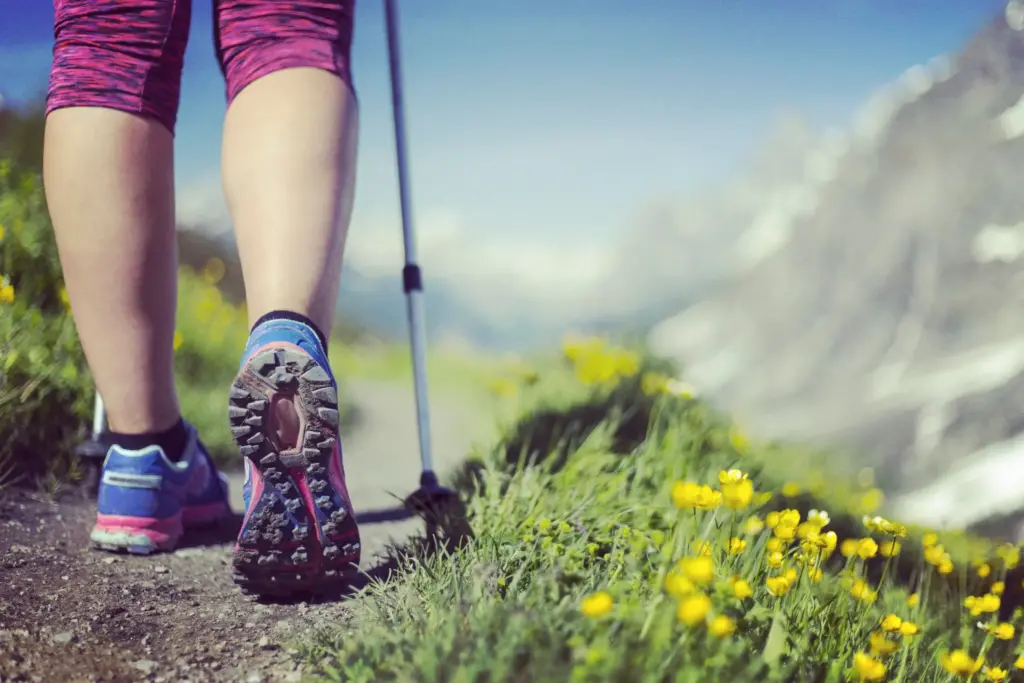
Embarking on a hiking journey is an adventure that opens doors to exploring the natural world. For beginners, it’s crucial to start on the right foot to ensure a safe and enjoyable experience. Here’s a detailed guide on how to begin your hiking journey:
Choosing Your First Trail: Finding the Perfect Start
- Research: Look for local trails that are known for being beginner-friendly. Websites and hiking apps can provide valuable information.
- Trail Difficulty: Start with trails classified as easy or moderate. These usually have well-marked paths and gentle slopes.
- Distance: Begin with shorter hikes, gradually increasing the distance as you build stamina and confidence.
Preparing for Different Weather Conditions: Be Weather Wise
- Weather Forecast: Always check the weather forecast before heading out. Weather can change rapidly, especially in mountainous areas.
- Appropriate Gear: Dress in layers and carry waterproof clothing. This helps you adapt to changing conditions.
- Sun Protection: Even on cloudy days, use sunscreen, sunglasses, and hats to protect against UV rays.
Safety Tips and Practices: Hike Smart
- Inform Someone: Always let someone know your hiking plan, including trail name and expected return time.
- Navigation Tools: Carry a map and compass or a GPS device. Knowing how to use them is essential.
- First Aid Basics: Pack a basic first aid kit and learn how to use it. Knowledge of common injuries and how to treat them can be crucial.
9. Advanced Hiking Tips
As you gain more experience in hiking, you’ll be ready to tackle more challenging adventures. Here are some advanced tips to help you prepare:
Navigating Challenging Terrains: Mastering Tough Trails
- Technique Training: Learn specific techniques for uphill and downhill hiking, rock scrambling, and crossing streams.
- Footwear: Ensure your hiking shoes are suited for rough terrain. Consider shoes with enhanced grip and ankle support.
- Pole Usage: Trekking poles can provide extra stability and reduce strain on knees during challenging hikes.
Long-Distance Hiking Advice: Endurance is Key
- Pacing: Understand your pace and plan your hike accordingly. It’s not about speed, but consistency and endurance.
- Hydration and Nutrition: Carry enough water and energy-rich foods. Staying hydrated and well-nourished is crucial on long hikes.
- Breaks: Take regular breaks to rest and recharge. Listen to your body to avoid overexertion.
Dealing with Altitude: High-Altitude Hiking
- Acclimatization: Gradually ascend to higher altitudes to allow your body to adjust to lower oxygen levels.
- Recognize Symptoms: Be aware of altitude sickness symptoms like headache, nausea, and dizziness.
- Safety First: If symptoms occur, descend to a lower altitude and seek medical advice if necessary.
10. Community and Resources
Being part of a hiking community and accessing the right resources can enrich your experience:
- Joining Hiking Groups: Find local or online groups to share experiences and gain insights.
- Online Forums and Resources: Websites and forums are treasure troves of information, from trail guides to gear reviews.
- Books and Guides: There are excellent books that offer in-depth knowledge about hiking techniques, safety, and more.
11. The Environmental Impact of Hiking
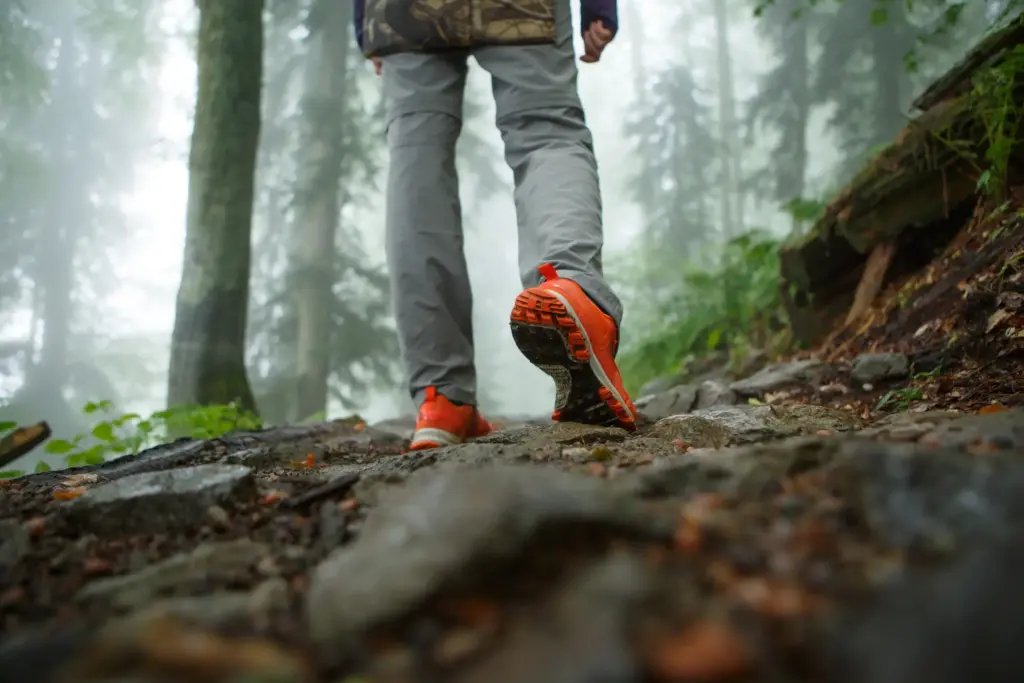
Hiking allows us to immerse ourselves in the natural world, and with this privilege comes the responsibility of minimizing our environmental impact. As hikers, we must be stewards of the earth, ensuring that the trails and wilderness areas remain pristine for future generations. Here’s how we can make a positive difference:
Leave No Trace Principles: Preserving the Wilderness
- Plan Ahead and Prepare: Research and respect trail rules and regulations. Prepare for your hike to minimize the impact.
- Travel and Camp on Durable Surfaces: Stick to marked trails and established campsites.
- Dispose of Waste Properly: Pack out all trash, leftover food, and litter. Use proper sanitation methods.
- Leave What You Find: Preserve the natural environment. Avoid picking plants, disturbing wildlife, or moving rocks.
- Minimize Campfire Impacts: Use a camping stove for cooking and enjoy natural darkness.
- Respect Wildlife: Observe wildlife from a distance. Do not feed animals or disrupt their natural behaviors.
- Be Considerate of Other Visitors: Respect other trail users and protect the quality of their experience.
Sustainable Hiking Practices: Every Step Counts
- Eco-Friendly Gear: Opt for gear made with sustainable materials and ethical manufacturing processes.
- Reduced Carbon Footprint: Carpool or use public transport to reach trailheads.
- Water Conservation: Use water resources sparingly and avoid contaminating water sources.
12. Health Benefits of Hiking
Hiking is more than just a recreational activity; it’s a gateway to improved physical and mental well-being. Here’s a closer look at the health benefits of hiking:
Physical Health Benefits: A Total Body Workout
- Cardiovascular Health: Regular hiking increases heart rate, improving heart health and reducing the risk of heart disease.
- Muscle Strength: Hiking engages multiple muscle groups, strengthening the legs, glutes, core, and back.
- Balance and Coordination: Navigating uneven terrain enhances balance and coordination skills.
- Bone Density: Weight-bearing activities like hiking strengthen bones, reducing the risk of osteoporosis.
Mental Health Benefits: Nature’s Therapy
- Stress Relief: Being in nature reduces stress levels and promotes relaxation.
- Mood Enhancement: Hiking releases endorphins, natural mood lifters that combat depression and anxiety.
- Cognitive Function: Regular physical activity, including hiking, has been shown to improve brain function and memory.
13. Preparing for Emergencies
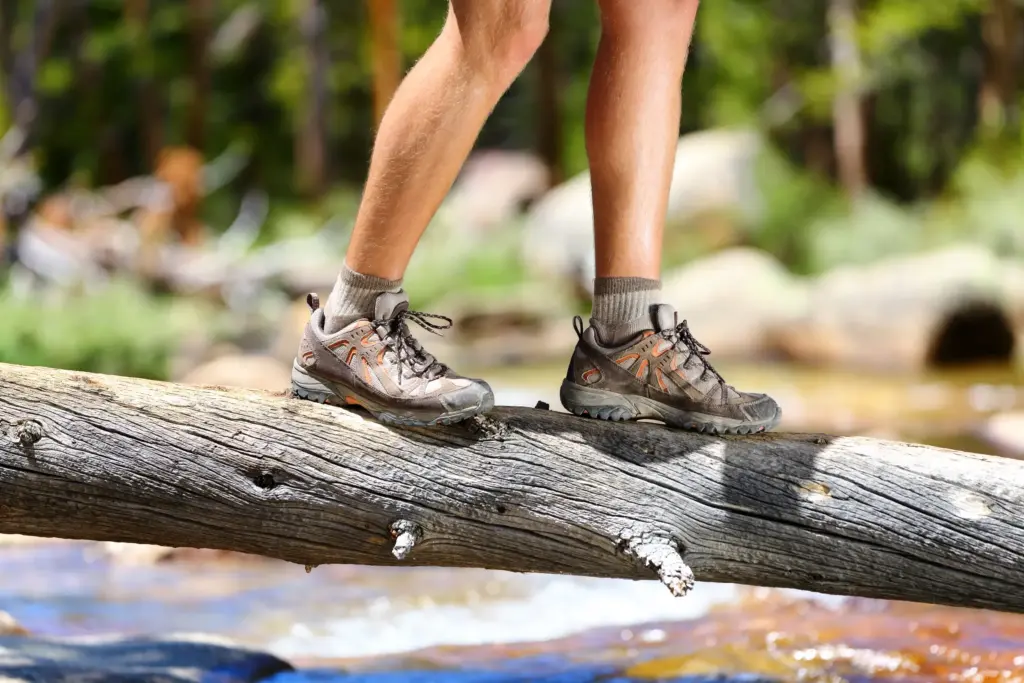
When hiking, being prepared for emergencies is as important as planning your route. Here’s what you need to know:
First Aid Essentials: Be Ready to Respond
- Basic First Aid Kit: Include bandages, antiseptic wipes, blister treatments, and any personal medications.
- First Aid Knowledge: Familiarize yourself with common hiking injuries and how to treat them.
Navigation Tools: Stay on Track
- Reliable Navigation: Carry a map, compass, or GPS device. Know how to use them, even if you’re on a familiar trail.
- Backup Battery: If you rely on electronic devices, carry a backup power source.
Emergency Protocols: Know What to Do
- Signal for Help: Carry a whistle or a mirror for signaling. Know the universal distress signals.
- Emergency Contacts: Have the local emergency services number saved and know the closest point of access for rescue teams.
- Shelter and Warmth: Pack emergency shelter and extra layers to protect against sudden weather changes.
14. Conclusion: Embracing the Hiking Lifestyle
As we wrap up this comprehensive guide on hiking shoes and the joys of hiking, I encourage you to step outside and embrace the trails. Remember, the right pair of hiking shoes can make a significant difference in your experience. Whether you’re traversing gentle hills or challenging mountain paths, the beauty and tranquility of nature await. Happy hiking!
15. FAQs
- What’s the difference between hiking shoes and boots?
Hiking shoes are generally lighter and offer more flexibility, ideal for day hikes and well-maintained trails. Boots provide more ankle support and are better suited for rugged terrains and carrying heavier loads. - How often should I replace my hiking shoes?
This depends on usage, terrain, and shoe quality. Generally, consider replacing them after 300-500 miles or when you notice significant wear and loss of support. - Can I use running shoes for hiking?
While running shoes can be used for light, well-maintained trails, they might not provide the necessary traction, support, and durability for rougher terrains. - How important are waterproof hiking shoes?
It depends on the environment. In wet conditions, waterproof shoes are essential. However, for dry climates, non-waterproof, breathable shoes might be more comfortable. - Are expensive hiking shoes always better?
Not necessarily. While high-quality materials and construction can increase price, there are affordable options that offer great value. Focus on fit, comfort, and suitability for your hiking needs.
Resources
https://indiahikes.com/blog/how-to-take-care-of-your-trekking-shoes
https://youtu.be/fJwvkUx4bCA?si=zxQbyamkJISrVwZs




